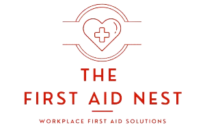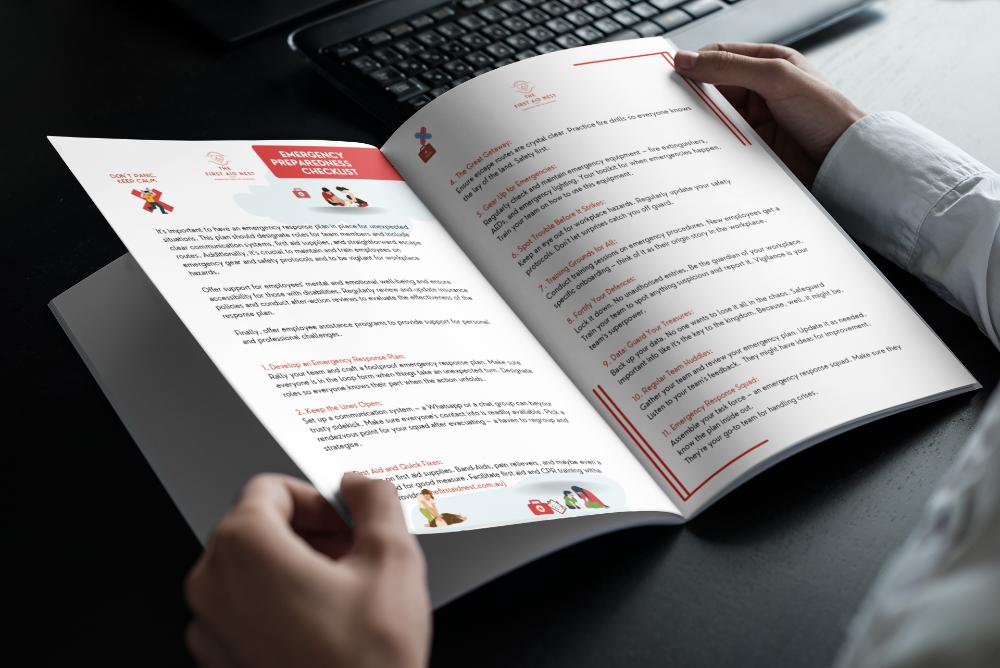First Aid Training for Children: When to Start and What to Teach
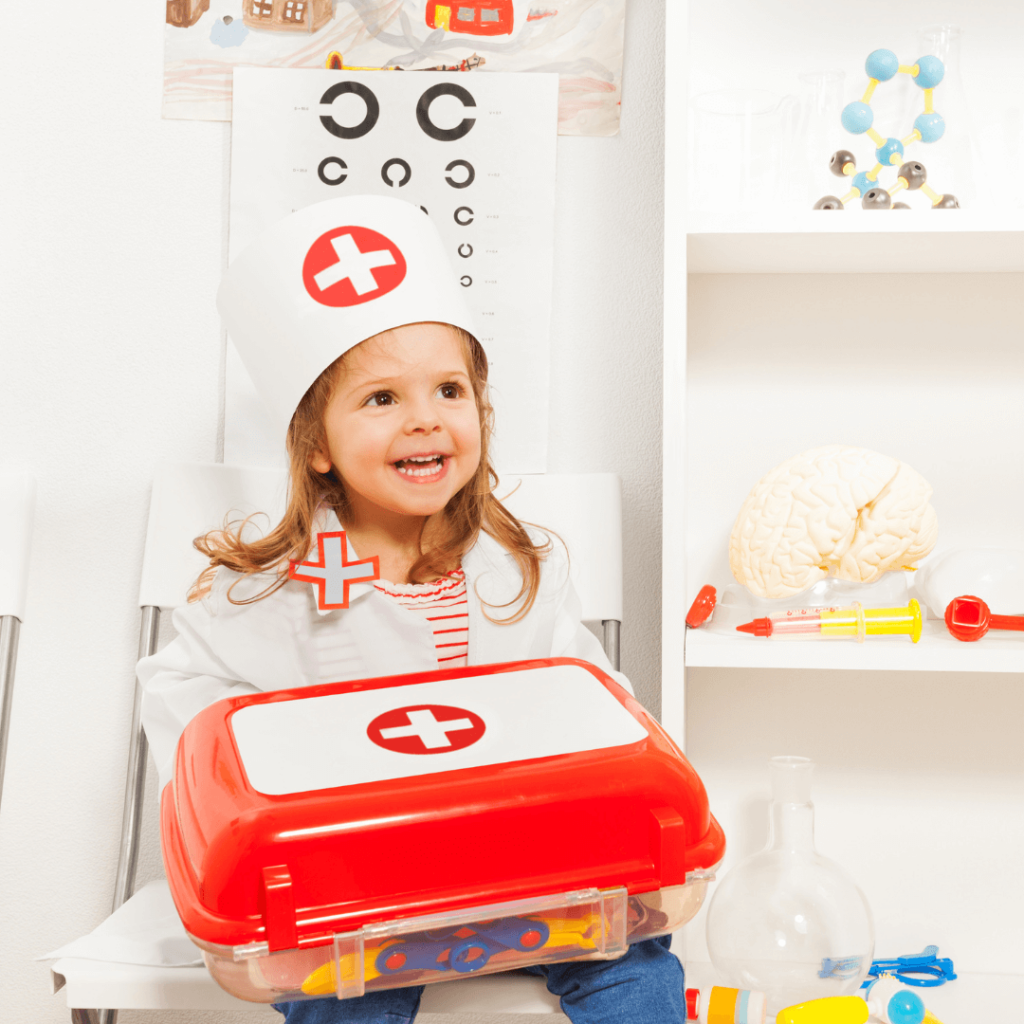
First aid knowledge is not just essential for adults but is a critical skill set for children as well. Educating children on basic first aid techniques empowers them to respond confidently and effectively in emergency situations, fostering a sense of responsibility and potentially saving lives.
The importance of this education cannot be overstated, as it prepares young individuals to act promptly and appropriately when faced with unforeseen circumstances.
This blog post is dedicated to guiding parents and educators on how to introduce first aid training to children in an age-appropriate in an engaging, and effective way.
Our goal is to equip you with the knowledge and tools necessary to ensure that the children in your care are prepared to handle emergencies with courage and competence, thereby laying the foundation for safer communities and nurturing the next generation of responsible adults.
Understanding the Right Age to Start
Deciding the right age to introduce children to first aid training involves understanding their developmental readiness to grasp and apply these crucial skills.
Children’s cognitive and emotional stages play a significant role in determining when and how they should start learning about first aid. While there’s no one-size-fits-all answer, general guidelines suggest tailoring the approach to the child’s maturity level, ensuring the information is both comprehensible and retainable.
Experts in child development and paediatric care weigh in on the importance of aligning first aid education with age-appropriate milestones, emphasising the need to consider a child’s ability to understand the concepts of safety and emergency response.
By assessing cognitive and emotional readiness, parents and educators can introduce first aid skills in a way that is both effective and empowering for children of various ages.
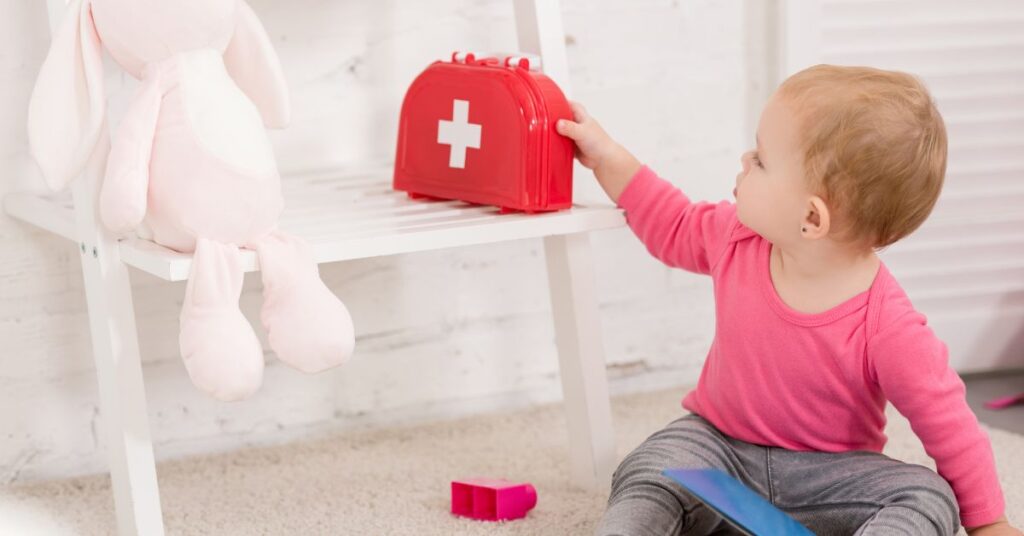
Developmental Readiness for First Aid Skills
- Observing a child’s curiosity and responsiveness to learning new concepts as indicators of readiness.
- Understanding how stages of cognitive development affect a child’s ability to grasp first aid concepts, such as cause and effect, problem-solving, and memory.
- Establishing benchmarks for introducing specific first aid skills, tailored to developmental stages from toddlerhood through adolescence.
- Modifying the depth and complexity of first aid information and practices to align with the child’s age and understanding.
- Leveraging insights from paediatricians on physical and emotional milestones that signal readiness for first aid training.
- Incorporating advice from child psychologists on creating a learning environment that nurtures emotional security, which can enhance engagement and retention of first aid skills.
- Implementing expert recommendations on pacing and content adjustment to maintain a child’s interest in first aid learning, ensuring it is both informative and not overwhelming.
First Aid Skills by Age Group
Teaching first aid skills to children requires a tailored approach that respects their developmental stage and understanding. From toddlers to teenagers, each age group can learn specific skills that not only enhance their safety knowledge but also build their confidence in handling emergency situations.
By categorising first aid training into age-appropriate lessons, we ensure that children are equipped with the necessary tools and knowledge suited to their level of comprehension and physical capability. This structured approach to first aid education allows for a gradual buildup of skills, ensuring that as children grow, they are prepared to take on more complex challenges and responsibilities.
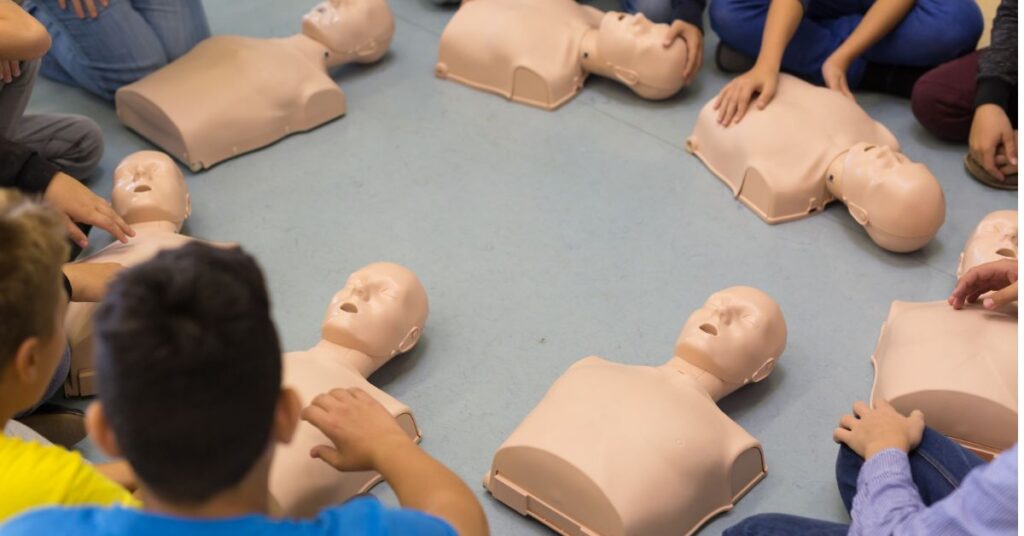
Toddlers and Preschoolers (Ages 2-4)
- Teaching the basics of safety awareness and how to alert an adult in case of an emergency.
- Using simple language to explain first aid concepts, such as what a “boo-boo” is and how to ask for “help.”
- Introduction to practical skills like basic wound care, including cleaning and bandaging a scrape or cut.
- Learning about first aid kits: identifying common items found inside and understanding their basic uses.
- Expanding first aid knowledge to include how to properly apply bandages and the basics of CPR.
- Skills for recognizing emergency situations and the importance of seeking help from an adult or calling emergency services.
- Teaching advanced first aid techniques, including full CPR training and how to use an Automated External Defibrillator (AED).
- Fostering a sense of responsibility and leadership in emergency situations, encouraging teenagers to take charge and help others safely and effectively.
Tips for Making First Aid Training Engaging
Making first aid training engaging for children is crucial to ensuring they absorb and retain life-saving skills. By incorporating interactive learning methods, practical sessions, and modern technology, educators and parents can transform first aid lessons from mundane to captivating.
Interactive activities like games and storytelling can illustrate first aid concepts in a relatable manner, making the learning process enjoyable and memorable. Hands-on practice reinforces these concepts, allowing children to apply what they’ve learned in a controlled environment.
Furthermore, leveraging technology through apps, online resources, and virtual reality can cater to the digital savvy generation, making first aid training not just educational but also exciting. This multi-faceted approach to first aid education engages children’s curiosity and enthusiasm, paving the way for a more profound understanding and application of first aid techniques.
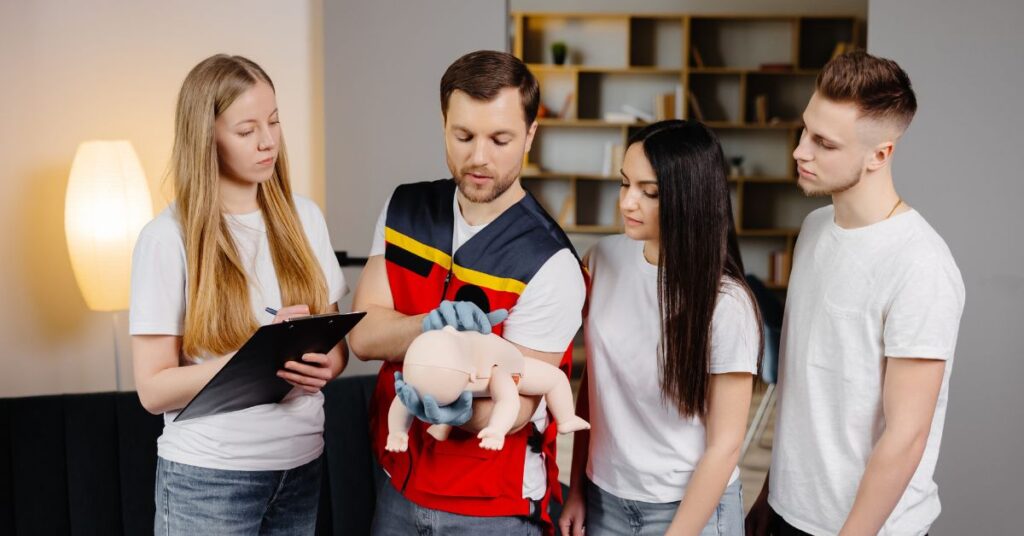
- Incorporating games that simulate first aid scenarios to teach critical thinking and response strategies.
- Utilising stories and role-playing activities to explain the importance of various first aid techniques.
- Examples of tools and resources that make learning interactive, such as board games or interactive books designed for first aid education.
- Emphasizing the role of hands-on experience in mastering first aid skills, such as bandaging or performing mock CPR.
- Organizing supervised practice sessions where children can practice first aid techniques in a safe environment.
- Introducing apps and online platforms offering first aid tutorials, quizzes, and interactive lessons tailored for young learners.
- Utilizing virtual reality (VR) and video-based learning tools to simulate emergency scenarios, offering older children and teenagers a more immersive learning experience.
Encourage Ongoing Learning and Practice
Encouraging ongoing learning and practice of first aid is essential for ensuring that children not only acquire but also retain these vital skills.
Integrating first aid training into daily routines and fostering a culture of safety and preparedness at home can make a significant difference in a child’s ability to react effectively in emergency situations. Parents and educators can play a pivotal role by modeling safe practices, providing regular refreshers on first aid techniques, and encouraging children to share their knowledge with peers.
This continuous engagement not only reinforces the importance of first aid skills but also builds a community of young individuals who are ready and able to help in times of need. By making first aid learning a part of everyday life, children can develop a lasting appreciation for safety and a proactive approach to emergency preparedness.
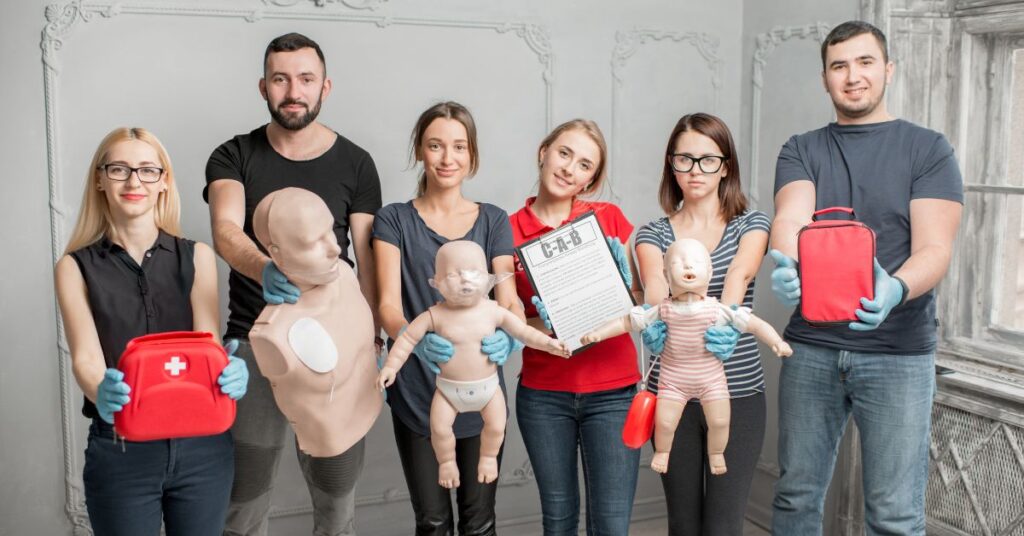
Tips for Incorporating First Aid Learning into Everyday Life
- Introduce regular “safety spotlights” or “first aid Fridays” to discuss different first aid topics each week.
- Incorporate first aid scenarios into playtime or storytime, allowing children to practice their skills in a relaxed setting.
Creating a Culture of Safety and Preparedness at Home
- Keep a first aid kit accessible and involve children in regular checks and restocking, explaining the use of each item.
- Conduct family emergency drills, including practice calls to emergency services (without actually dialing) to build familiarity with the process.
Encouraging Children to Share Their Knowledge and Skills with Peers
- Support children in organizing mini first aid workshops for their friends or siblings, reinforcing their own skills while teaching others.
- Encourage children to become “safety ambassadors” at school or in their community, sharing tips and leading by example in promoting a culture of safety.
Our Baby First Aid Courses
Our baby first aid courses are available in person in your home and online. We run classes in your home with groups of 2, 4 or up to 10 in Sydney & Melbourne and you can book in 3 easy steps!
- Pick your class
- Follow the prompts to purchase
- We will contact you within 24 hours to lock in your date of choice
Our First Aid Certificate Courses
We run most of the popular first aid courses Australia wide. HLTAID011 Provide First Aid, HLTAID009 Provide CPR, HLTAID012 Provide First Aid in an Education & Care Setting, Mental Health first aid and CPR/LVR to name a few.
Book your public spot online or contact us if you have a group of 5+ people for onsite training.
Here are some other resources you may enjoy!
FREE GUIDE: Your Virtual Baby First Aid Kit
FREE GUIDE: Introducing Common Allergy Foods & Allergic Reactions
FREE Workplace Emergency Preparedness Plan: Grab this at the bottom of every page!
Follow for baby & child first aid and allergy info and tips on Instagram, TikTok & Facebook all @thenestcpr
